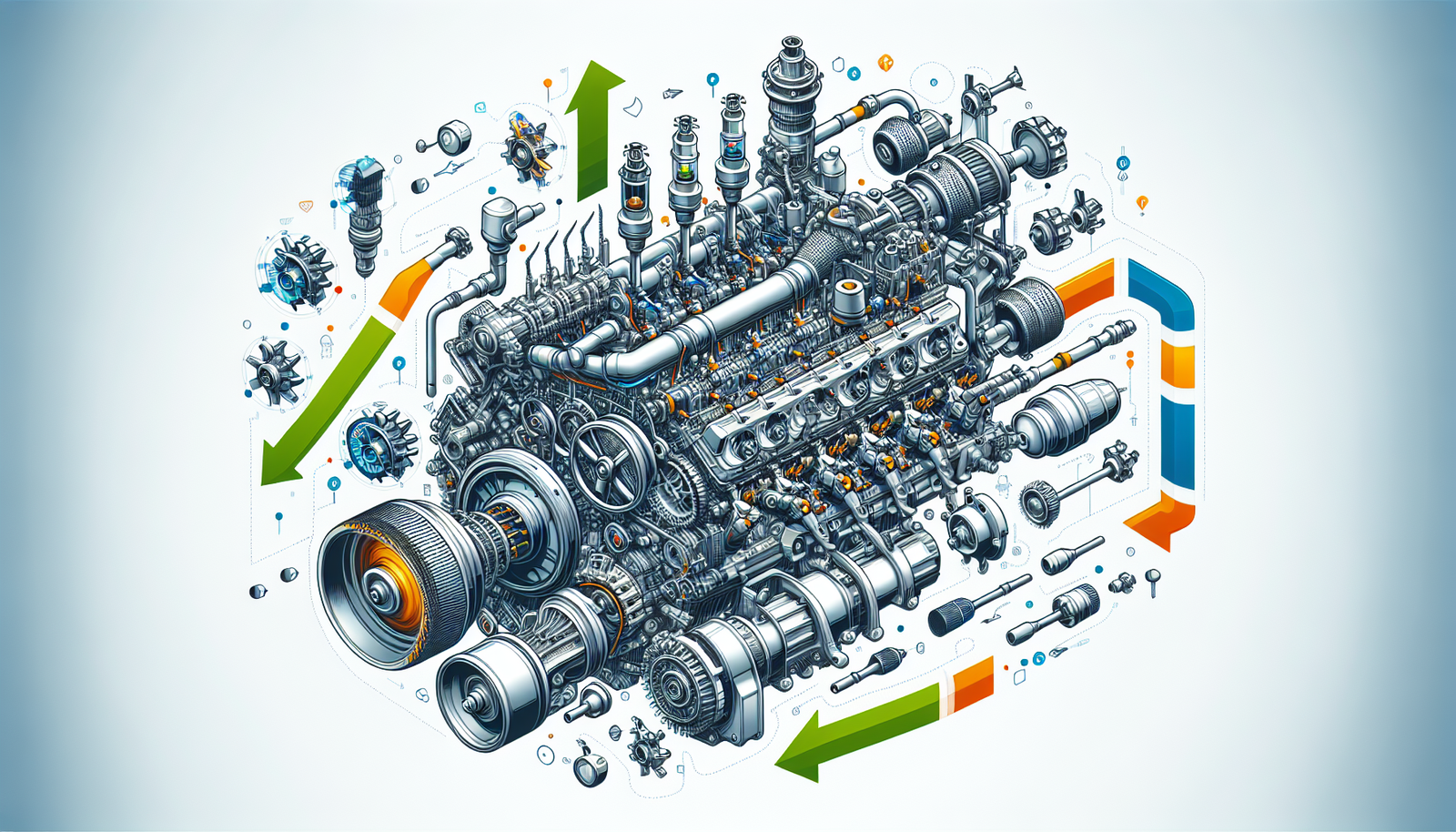Ready to explore the world of boat engine emission control technologies? You’re in luck! This article breaks down the most common practices and strategies used to manage and reduce harmful emission from boat engines. It’s packed with valuable information and easy-to-understand explanations, making it a must-read for the environmentally-conscious boater or just anyone curious about what goes on behind the scenes to keep our waters clean and air unpolluted. Brace yourself as you set sail on a journey through the technicalities of marine engine emission control.
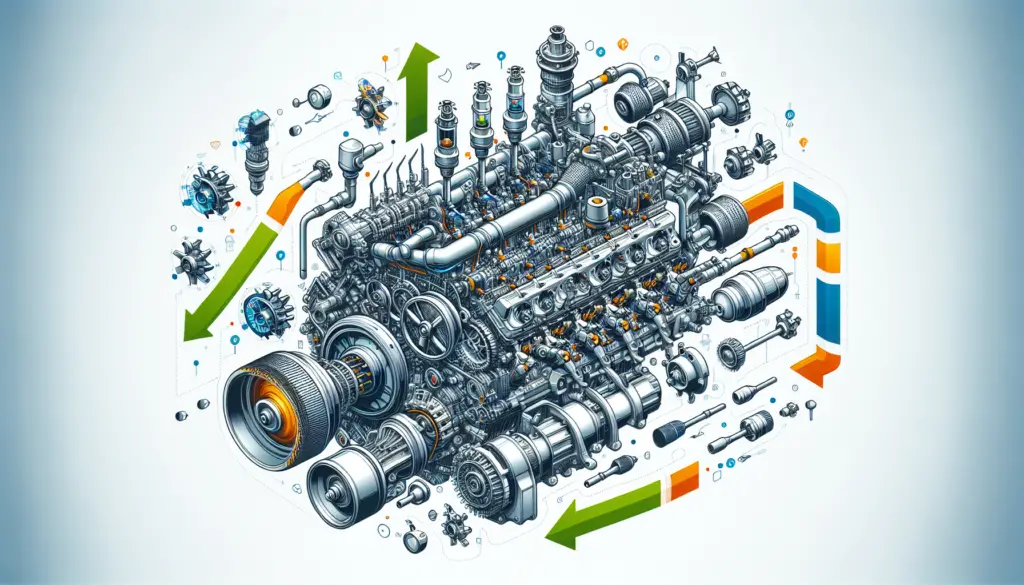
Understanding Boat Engine Emissions
Whether you’re a long-time boat owner or a newbie in the boating world, it’s important that you understand boat engine emissions. Just like cars, boats emit pollutants into the environment, which can adversely affect both human health and the ecosystem we live in.
Definition of Boat Engine Emissions
Boat engine emissions refer to the pollutants, mainly gaseous and particulate substances, that are released from the exhaust of marine vessels. These emissions are primarily a result of burning fuel in the boat’s engine. They include carbon dioxide (CO2), nitrogen oxides (NOx), sulfur oxides (SOx), hydrocarbons (HC), and particulate matter (PM), among others.
Impacts of Boat Engine Emissions on Environment
These boat engine emissions have various detrimental impacts on the environment. High levels of nitrogen and sulfur oxides, for instance, can result in acid rain. Particulate matter can lead to water and air pollution, affecting visibility and human health. Carbon dioxide, a greenhouse gas, contributes to global warming and climate change.
Importance of Emission Control in Boats
Given these impacts, there arises a pressing need for effective emission control measures in boats. Through emission control, you can reduce the environmental footprint of your boating activities and contribute to a healthier, cleaner environment. Moreover, with the ongoing environmental regulations, emission control has become a necessary compliance for boat owners.
Regulations and Standards for Boat Engine Emissions
With the increasing public and scientific concern over environmental pollution, regulations and standards on boat engine emissions have been established by both national and international bodies.
Current Emission Standards for Maritime Vessels
These emission standards for maritime vessels focus on limiting the concentration of harmful substances in the engine exhaust. Today, most nations have stringent regulations regarding the emission levels of pollutants such as CO2, NOx, SOx, non-methane hydrocarbons (NMHC), and particulate matter.
International Regulations and Their Impact
Internationally, bodies such as the International Maritime Organization (IMO) have laid down rules regarding emissions. These regulations have been instrumental in encouraging the development and use of emission control technologies in the boating sector, thus progressively reducing the environmental impact of maritime operations over the years.
Significance of Upholding Emission Standards
Upholding these emission standards is crucial not just for legal compliance, but also for the conservation of our planet. By adhering to these standards, you are contributing to initiatives aimed at mitigating the impacts of climate change and creating a healthier environment for all.
Internal Combustion Engine (ICE) and its Emission Properties
Boat engines, particularly those powered by diesel or petrol, primarily use an internal combustion engine (ICE).
Understanding the Workings of an ICE
An ICE works by combusting fuel in a confined space. This results in a rapid expansion of high-temperature and high-pressure gases, which then drive a piston, producing mechanical work. In marine engines, this work propels the boat forward.
Sources of Emissions in an ICE
Emissions in an ICE are comprised of byproducts from the combustion of fuel. They are typically released into the atmosphere through the vehicle’s exhaust system. The QUALITY and QUANTITY of these emissions depend on factors like the type of fuel used, engine design, and operating conditions.
Types of Emissions Produced by an ICE
ICE-powered boats, particularly those running on diesel, release a variety of pollutants. These include CO2, a key greenhouse gas; NOx, which can contribute to air pollution and respiratory complications; and particulate matter, tiny particles that can harm both human health and the environment if inhaled or ingested.
Technologies for Emission Control in ICE-Driven Boats
Given the environmental concerns related to ICE emissions, a range of emission control technologies have been developed to minimize these pollutants.
Introduction to Emission Control Technologies
Emission control technologies refer to mechanisms that aim to reduce the emission of pollutants from a vehicle’s exhaust. They primarily target the harmful substances generated during the combustion process in the engine and include strategies such as exhaust gas treatment and combustion optimization.
After-Treatment Technologies for ICEs
After-treatment technologies involve treating the engine’s exhaust gases before they’re released into the atmosphere. Examples include exhaust gas recirculation (EGR), selective catalytic reduction (SCR), diesel particulate filters (DPFs), and lean NOx traps (LNTs). These technologies aim to filter, convert, or trap harmful pollutants, reducing their concentration in the exhaust gas.
In-Cylinder Emission Control Techniques
On the other hand, in-cylinder emission control techniques focus on controlling emissions inside the engine itself. This is typically achieved by improving the combustion process, such as through the use of high-pressure common rail (HPCR) systems, which contribute to more efficient fuel combustion and thus lower emissions.
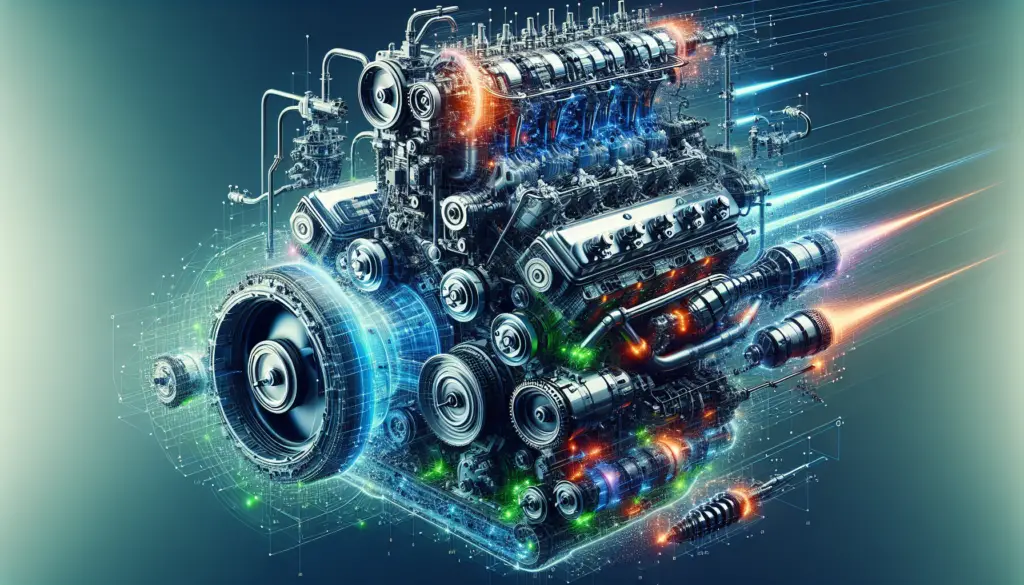
Exhaust Gas Recirculation (EGR) System
EGR is one of the after-treatment technologies that has been widely used in maritime engines to control NOx emissions.
Principles of EGR System
In an EGR system, a portion of exhaust gas is redirected back into the engine’s intake, causing a reduction in combustion temperatures. This reduced temperature hampers the formation of NOx emissions, delivering a cleaner exhaust.
Emission Reduction Using EGR
EGR systems can reduce NOx emissions by up to 70%. However, they may also increase fuel consumption and CO2 emissions due to altered combustion conditions.
The Advantages and Disadvantages of EGR
While EGR systems effectively reduce NOx emissions, they come with drawbacks, such as an increase in particulate matter formation and potential fouling or corrosion in the EGR system. Hence, EGR should be employed along with other emission control measures for comprehensive pollutant reduction.
Selective Catalytic Reduction (SCR) System
SCR is another popular after-treatment technology, which primarily targets NOx emissions.
Understanding SCR and Its Principle
In an SCR system, a reductant, usually urea, is introduced into the exhaust gas stream. Through a catalytic reaction, the NOx pollutants are then broken down into nitrogen and water, which are harmless components of the air we breathe.
Emission Reduction Using SCR
SCR systems are quite effective, capable of reducing NOx emissions by up to 90%. They also minimize HC and PM emissions to some extent.
Pros and Cons of Using SCR System
While SCR is very efficient in reducing NOx emissions, it adds to the operational complexity and cost. Additionally, the system requires a continual supply of urea reductant, which can be a challenge in certain operational conditions.
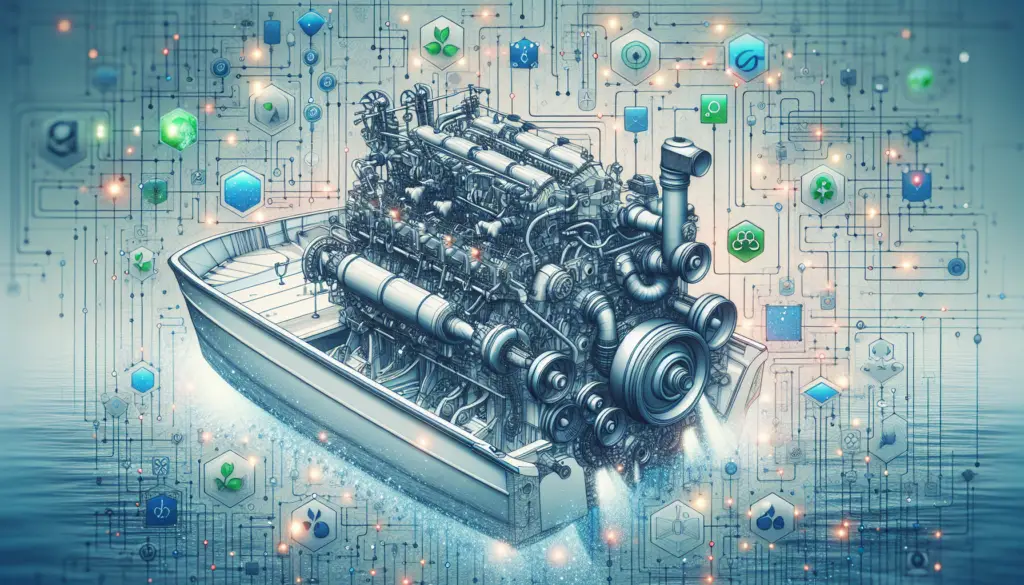
Diesel Particulate Filters (DPFs)
DPFs are specifically designed to control particulate matter emissions in diesel engines.
Function and Usage of DPFs in Boat Engines
A DPF captures particulate matter from the exhaust gas in a filter substrate. Over time, the collected particles are burned off during a process known as regeneration, turning them into less harmful gases.
Effectiveness of DPFs in Emission Control
DPFs are highly effective, capable of capturing up to 90% of total particulate matter emissions. However, their effectiveness can be compromised if not maintained properly, as blockages can occur in the filter over time.
Challenges and Limitations of DPFs
The use of DPFs does present certain challenges. These include regeneration issues, risk of clogging, and higher back pressure in the exhaust system. Moreover, these systems can be quite complex to install and maintain.
Lean NOx Traps (LNTs)
LNTs are another popular after-treatment technology for maritime engines.
Principle and Function of LNTs
In an LNT system, NOx emissions are absorbed under lean conditions (high oxygen levels) and then reduced to nitrogen under rich conditions (low oxygen levels). This is achieved by periodically switching the engine’s operating conditions between lean and rich.
Emission Control Using LNTs
LNTs are effective in reducing NOx emissions. However, their efficiency depends on the engine’s operating condition. They operate best at high engine loads and temperatures.
Challenges and Prospects of Using LNTs
While LNTs present a promising solution to NOx emission, they have limitations. They are less efficient at low temperatures and degrade over time due to sulfur poisoning. Further research and development are needed to overcome these challenges and to make LNTs more versatile and durable for marine applications.
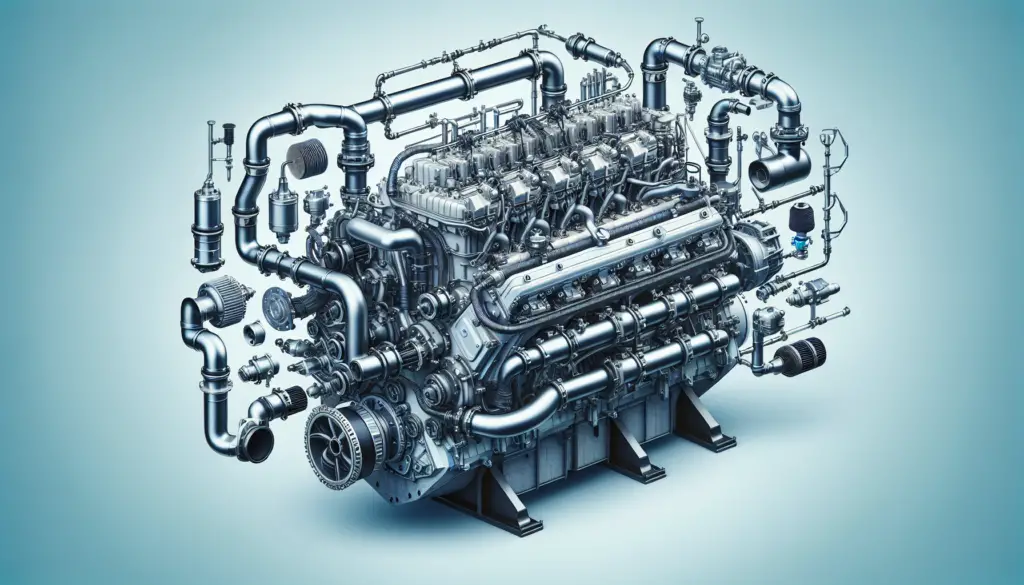
Usage of Alternative Fuels for Emission Reduction
In addition to emission control technologies, the use of alternative fuels can also significantly reduce boat engine emissions.
Types of Alternative Fuels
Alternative fuels include biodiesel, ethanol, natural gas, hydrogen, and electricity. Each has its own benefits and drawbacks in terms of emissions, cost, performance, and availability.
Impacts of Alternative Fuels on Emissions
The use of alternative fuels can result in dramatically lower emissions of pollutants. For instance, biodiesel and ethanol produce less CO2 and Particulate matter than conventional fuels. However, their use may lead to higher emissions of other pollutants, like NOx.
Advantages and Disadvantages of Alternative Fuels
While alternative fuels can reduce certain emissions, their overall impact depends on factors like production methods and supply chain efficiency. They also present challenges in terms of storage, distribution, and infrastructure compatibility.
Future Trends of Emission Control Technologies for Boat Engines
The field of emission control technologies for boat engines continues to evolve and improve.
Emerging Technologies for Emission Reduction
Emerging technologies include electrification, hybrid systems, hydrogen fuel cells, and more. Each of these offers distinct benefits and holds the promise of further improving emission control in maritime vessels.
Projected Impacts of Advancements in Emission Control
Continued advancements in emission control technologies are expected to further decrease boat emissions, contributing to cleaner air and water. These developments could also lead to better fuel efficiency, thereby reducing operational costs.
Adaptation Challenges and Opportunities for New Technologies
While these new technologies open up opportunities for cleaner maritime operations, they also present challenges. Integrating these technologies into existing boat designs, overcoming technical hurdles, and educating boat owners about new technologies and practices are all matters that need to be addressed to ensure successful adaptation. However, with ongoing commitment and innovation, the future of emission control in boats appears bright.

